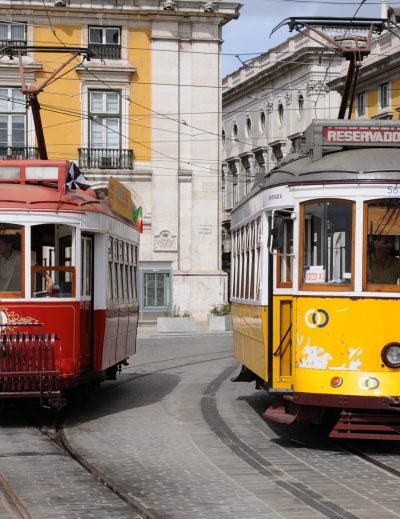
Palazzo Vecchio: A Guide for Travellers to Florence
Exploring Palazzo Vecchio
Palazzo Vecchio, or the “Old Palace,” is one of the most important landmarks in Florence. Located in Piazza della Signoria, this fortress-like building has served as Florence’s town hall, a Medici residence, and the seat of the Italian government when the city was briefly the capital. Today, it is a museum and civic office that captures the political, artistic, and architectural layers of Florence’s past.
A Landmark of Power and History
The building’s construction began in 1299 under Arnolfo di Cambio, the same architect behind Florence’s cathedral. It was built on the ruins of homes destroyed for political reasons and originally served the government of the Florentine Republic. Known then as Palazzo della Signoria, it was renamed Palazzo Vecchio when the Medici rulers moved across the river to Palazzo Pitti. The building was later used as the seat of Italy’s government from 1865 to 1871.
Exterior Highlights
Palazzo Vecchio faces the busy Piazza della Signoria, with its tower and battlements recalling its medieval origins. The Arnolfo Tower stands 95 metres tall and dominates the skyline. At the main entrance, look for sculptures of David (a replica of Michelangelo’s) and Bandinelli’s Hercules and Cacus. A plaque above the door features the phrase “King of Kings and Lord of Lords,” flanked by the coats of arms of the Florentine Republic.
What to See Inside Palazzo Vecchio
First Courtyard
Enter through Michelozzo’s courtyard, which was updated with frescoes and classical motifs in the 16th century for a Medici wedding. At the centre is a fountain by Battista del Tadda.
Hall of the Five Hundred
This enormous chamber, the Salone dei Cinquecento, was originally created by Savonarola for Florence’s Great Council and later redesigned by Vasari for Cosimo I. Frescoes here depict key military victories, and the richly decorated ceiling celebrates Medici power. Look for Michelangelo’s The Genius of Victory and the mysterious phrase “cerca trova”.
Hidden Corners and Medici Rooms
Don’t miss the Studiolo of Francesco I, a small chamber once used for study and reflection, filled with paintings and rare objects. Nearby are the apartments of Eleonora of Toledo and other Medici family members, showcasing rich frescoes, tapestries, and religious artwork. Bronzino’s frescoed chapel is one of the highlights.
Map Room
The Sala delle Carte Geografiche houses cabinets painted with maps from the 16th century and a large globe in the centre. Behind one map is a hidden doorway. This room was designed to reflect Medici interest in science, travel, and power.
Roman Theatre Remains
Beneath the palace are the remains of a Roman theatre dating back to the first century AD. Small guided tours are available to view the ancient walls, corridors, and historical layers.
Climbing the Arnolfo Tower
You can climb more than 200 steps to reach the top of the Arnolfo Tower, where panoramic views of Florence await. On the way up, pass the Alberghettino, the prison cell where figures like Cosimo the Elder and Savonarola were held. The tower is closed in poor weather and may not be suitable for all visitors.
Practical Information for Visitors
Opening Hours
- Museum: 9 am to 7 pm (Mon–Wed, Fri–Sun); 9 am to 2 pm (Thu)
- Tower: 9 am to 6 pm; 9 am to 2 pm (Thu)
- Limited hours on major holidays
Ticket Prices
- Museum: around €12.50
- Tower: around €10
- Combo tickets available
- Free entry for Florence residents on the first Sunday of each month
Best Times to Visit
Early weekday mornings tend to be the quietest. Avoid weekends and school holidays for a more relaxed experience.
How Long to Spend
Plan for 2 to 3 hours to see the main museum. Add 30–45 minutes for the tower, and longer if exploring the Roman remains or booking a guided tour.
Tours and Activities
Palazzo Vecchio offers various guided tours, including secret passages, family-friendly experiences, and itineraries inspired by Dan Brown’s Inferno. There are also hands-on workshops for children aged eight and up. Booking in advance is recommended.
Attractions Nearby
Just outside is Piazza della Signoria, full of Renaissance art and sculpture, including Cellini’s Perseus and the Fountain of Neptune. The Uffizi Gallery, Florence Cathedral, Bargello Museum, and Ponte Vecchio are all within walking distance.
Visitor Tips
- Flash photography is not permitted
- Some parts of the building require a guided tour to access
- The museum is wheelchair accessible, but the tower is not
- Water fountains with still and sparkling options are available outside the building
A Must-Visit in Florence
Palazzo Vecchio is more than a historic building—it’s a living archive of Florence’s past. Whether you’re interested in Renaissance art, political intrigue, or panoramic views, it offers a deep and enriching experience worth including in your list of things to do in Florence.




Leave a Reply
You must be logged in to post a comment.